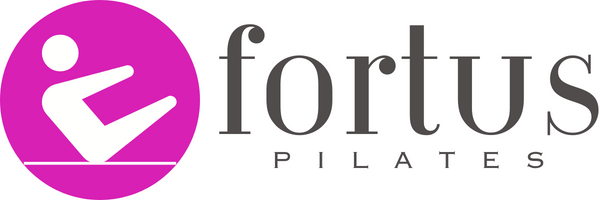Fortus Pilates Blog
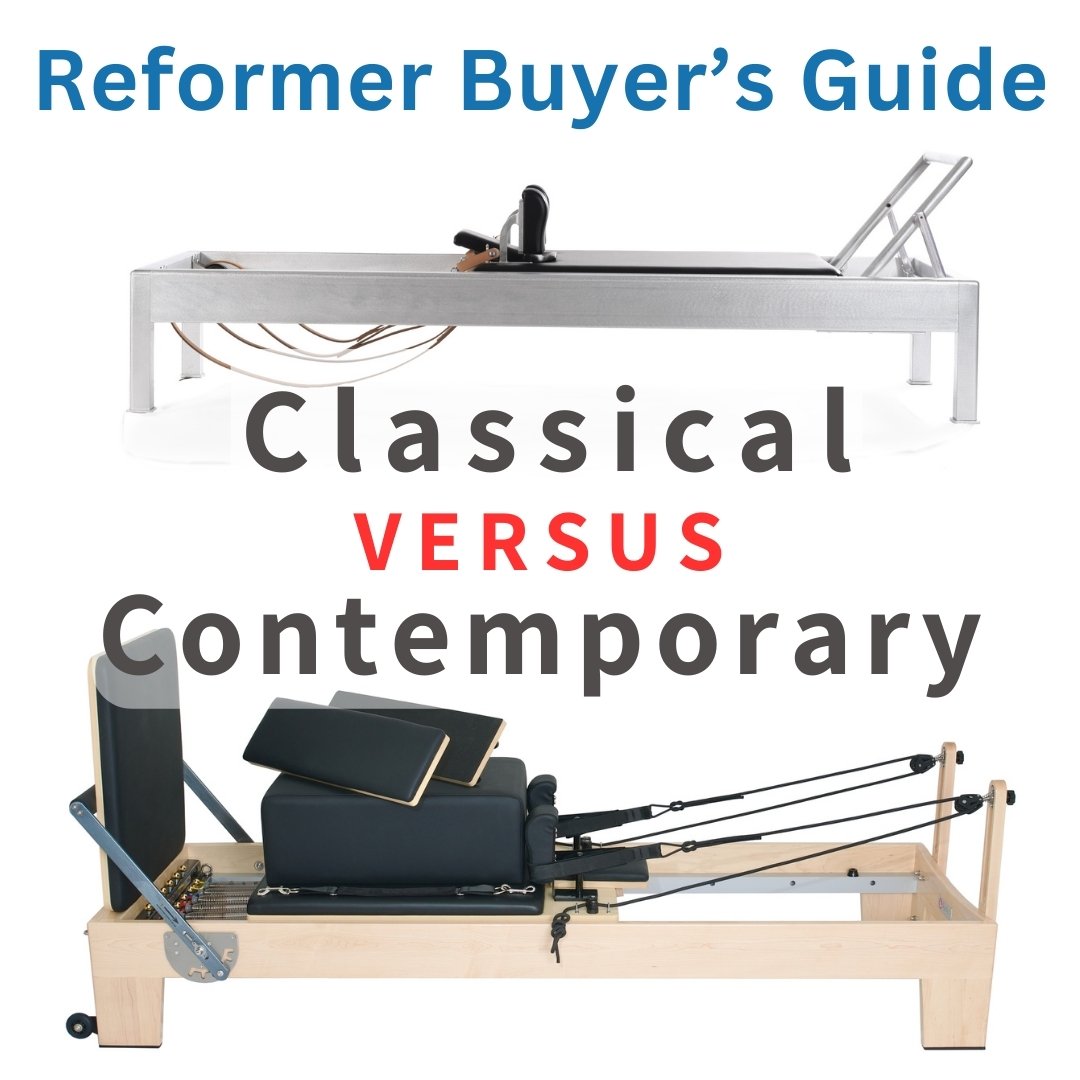
Reformer Buyer's Guide: Classical versus Contemporary
Today, we're faced with two main categories of reformers: Classical and Contemporary. Both types honour the core principles of Pilates, yet they differ in design, functionality, and approach. Let's explore these differences to help you decide which might be the right fit for your Pilates journey.
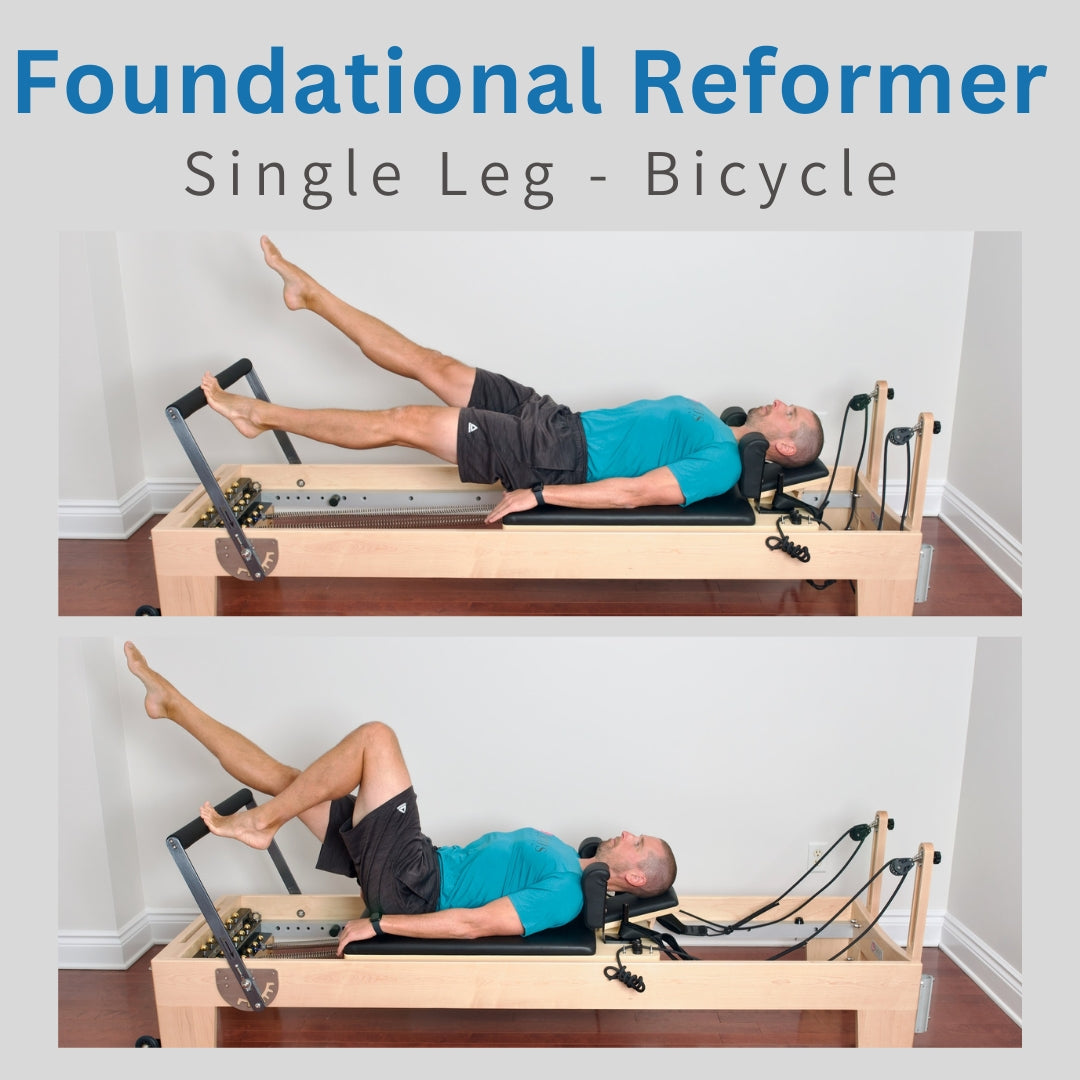
Foundational Reformer: Single Leg - Bicycle
The Pilates Reformer Single Leg, Bicycle exercise involves maintaining a constant abdominal contraction while bending and extending a single leg supported by the footbar and also simultaneously reciprocally extending and bending the unsupported leg. The focus is on the entire abdominal area as well as the hip extensors and quadriceps.
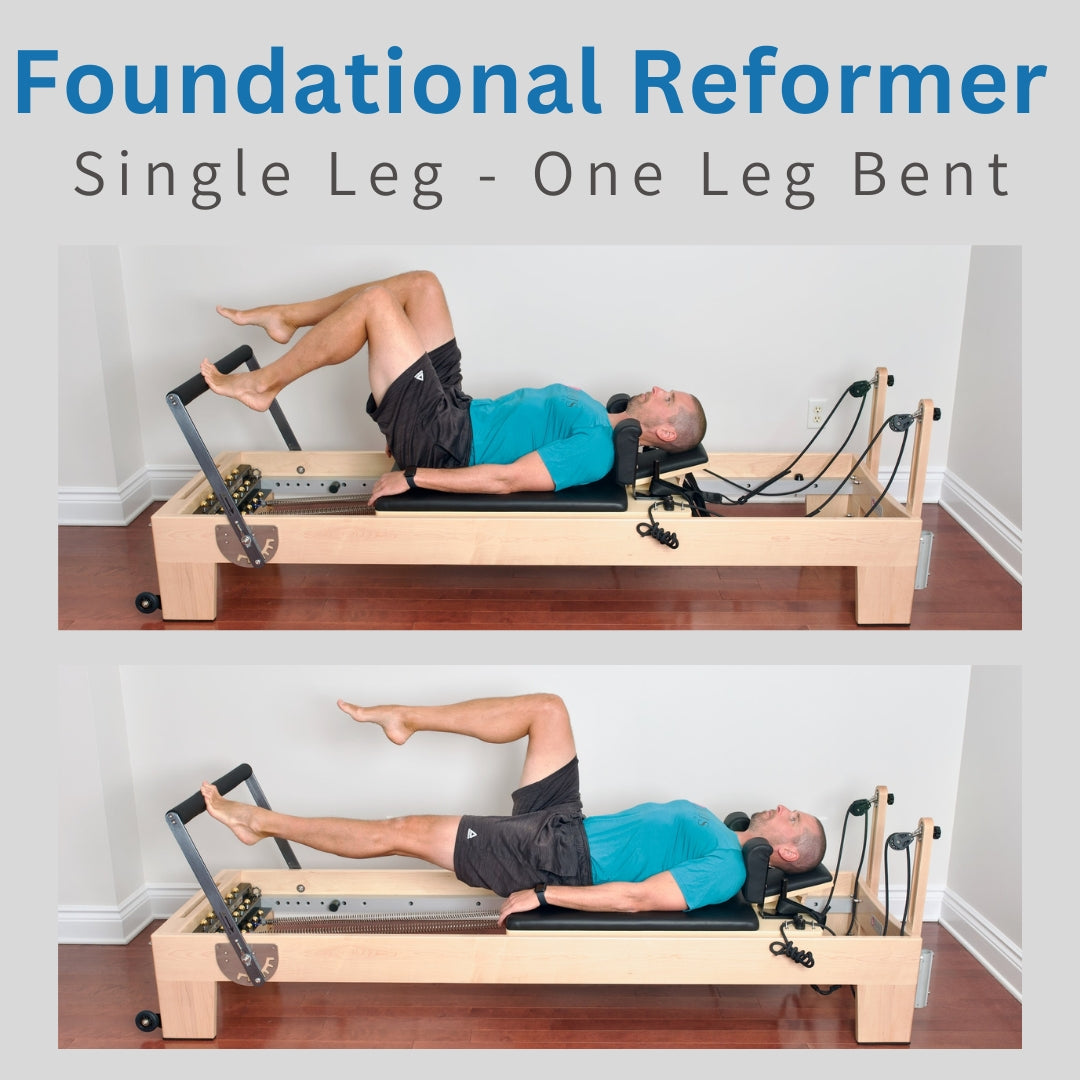
Foundational Reformer: Single Leg - One Leg Bent
The Pilates Reformer Single Leg, One Leg Bent exercise involves maintaining a constant abdominal contraction while bending and extending a single leg supported by the footbar. The focus is on the entire abdominal area as well as the hip extensors and quadriceps.
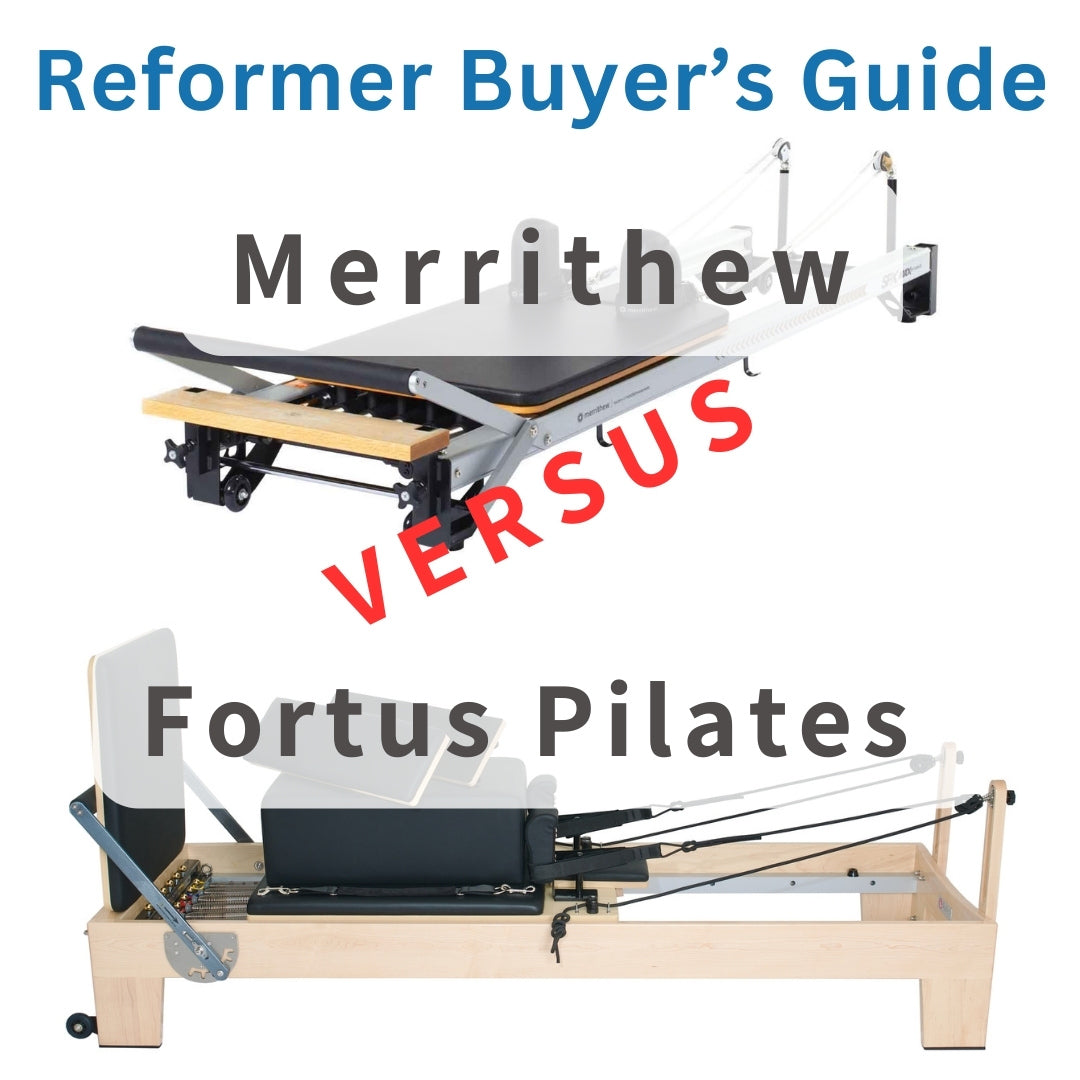
Reformer Buyer's Guide: Merrithew vs Fortus Pilates
Discover how the Fortus Pilates range of reformers compares to those from Merrithew. Dive deep into a comprehensive comparison that covers all aspects including quality, accessories, pricing, warranties, and more. This detailed analysis will help you understand the nuances that set apart these two premier providers of Pilates reformer machines, enabling you to make an informed decision based on your specific needs and preferences.
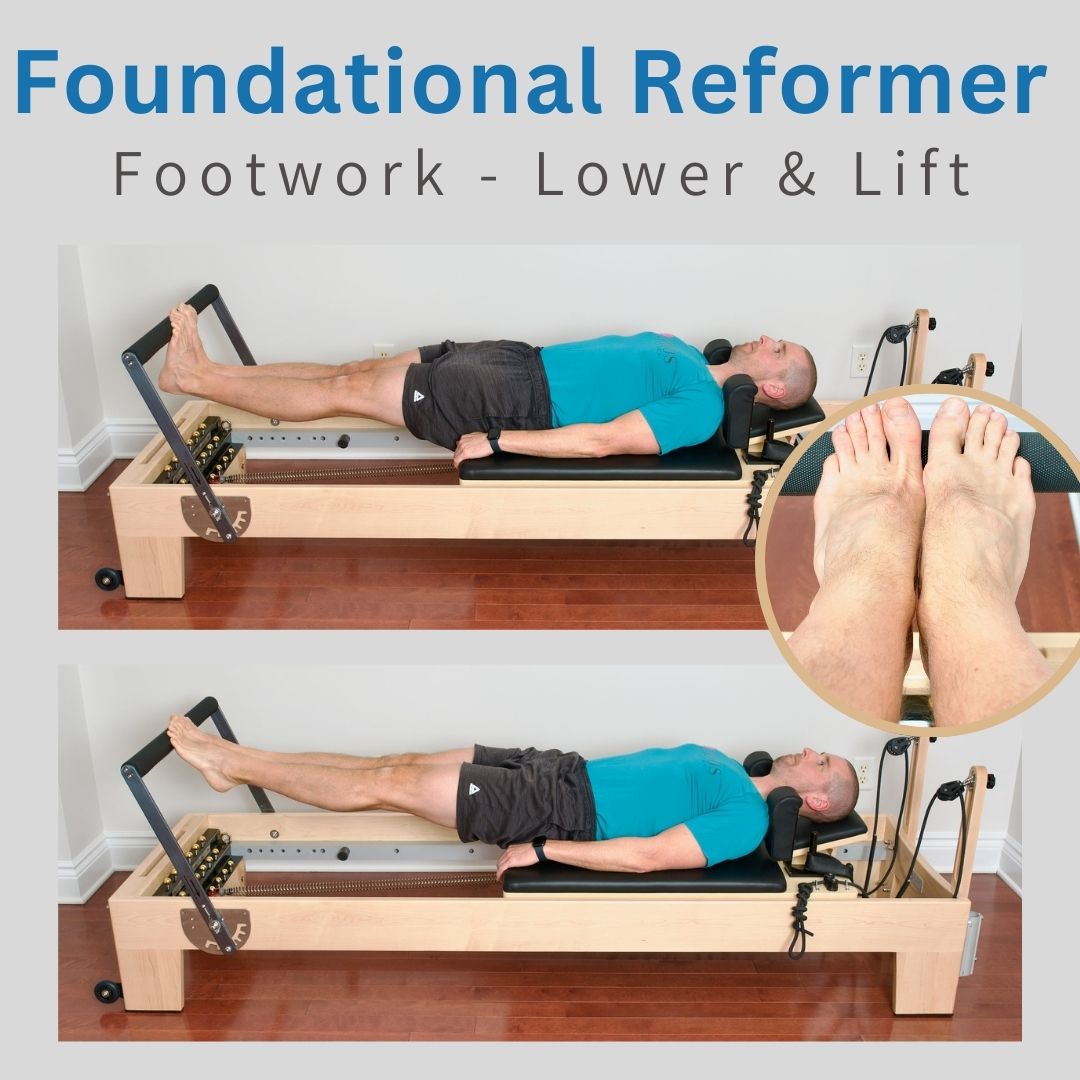
Foundational Reformer: Footwork - Lower and Lift
The Pilates Reformer Lower & Lift focuses on the calves, ankles, and feet. Strengthen and elongate calf muscles, improve ankle flexibility, and enhance foot mobility. Particularly advantageous for runners, dancers, and those seeking to improve overall lower extremity health and flexibility.
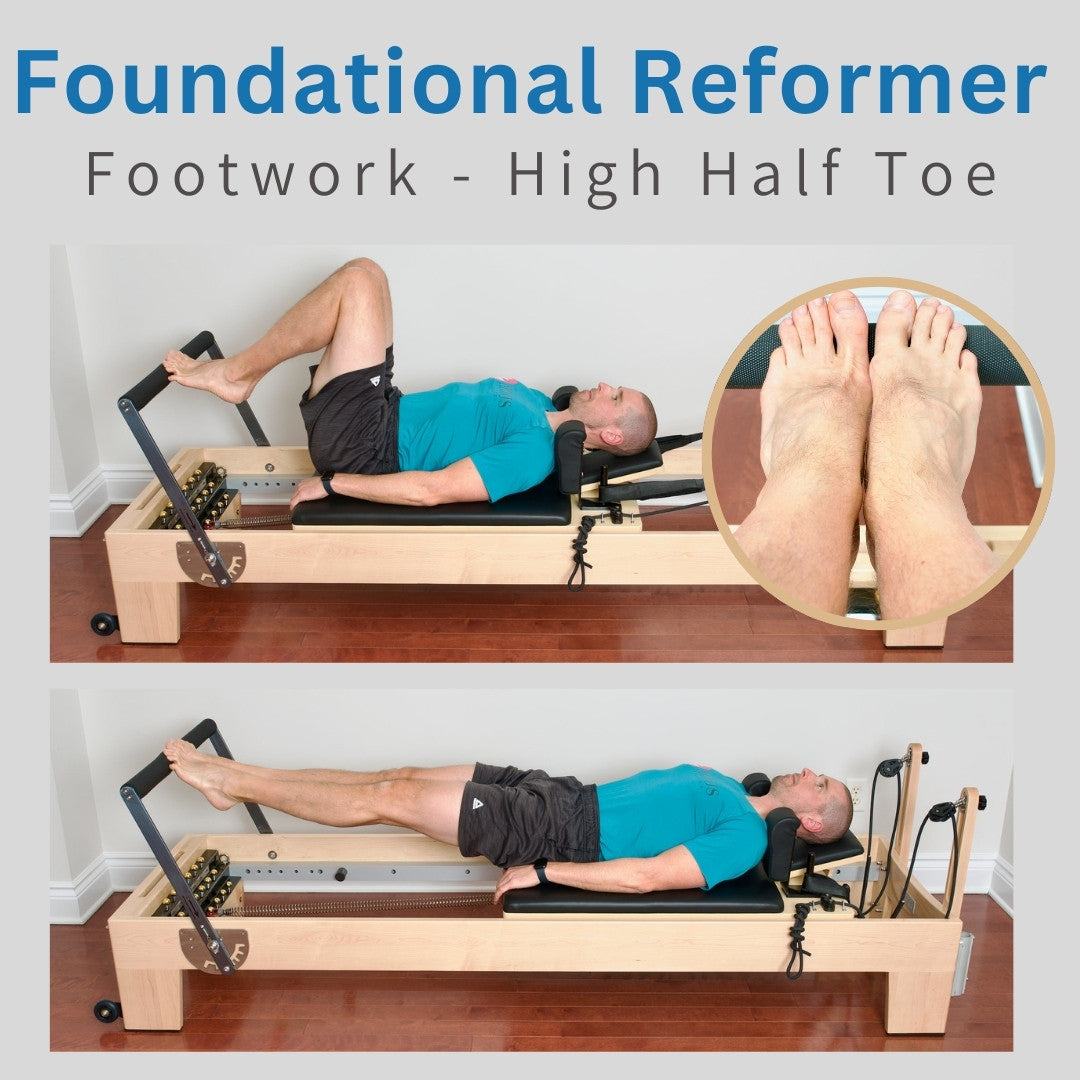
Foundational Reformer: Footwork - High Half Toe
The Pilates Reformer High Half Toe exercise targets the calves, hamstrings, and stabilizes ankle muscles. Performed with the balls of the feet on the reformer bar, this exercise involves leg extensions, emphasizing calf and hamstring engagement. It strengthens these muscles, improves ankle stability, and enhances overall lower body alignment. Beneficial for athletes and those looking to improve lower body strength, it also aids in injury prevention and promotes efficient movement patterns.
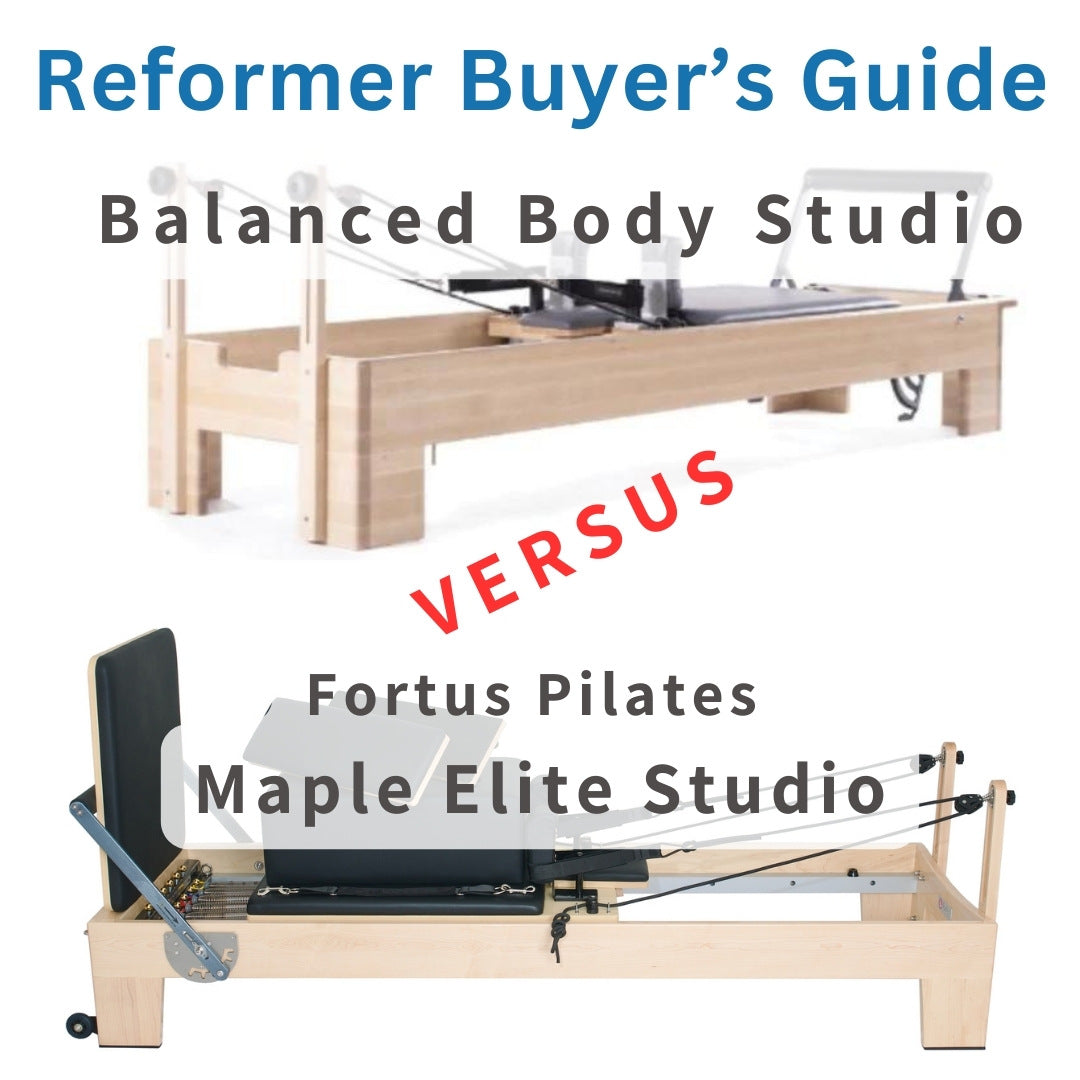
Reformer Buyer's Guide: Balanced Body Studio Reformer vs Fortus Pilates Maple Elite Studio Reformer
How does the Fortus Pilates Maple Elite Studio Reformer compare to the Balanced Body Studio Reformer? While both reformers are solid choices suitable for both studio and home use, there are important differences. Learn more about how these reformers compare on quality, included accessories, price, warranties, etc.
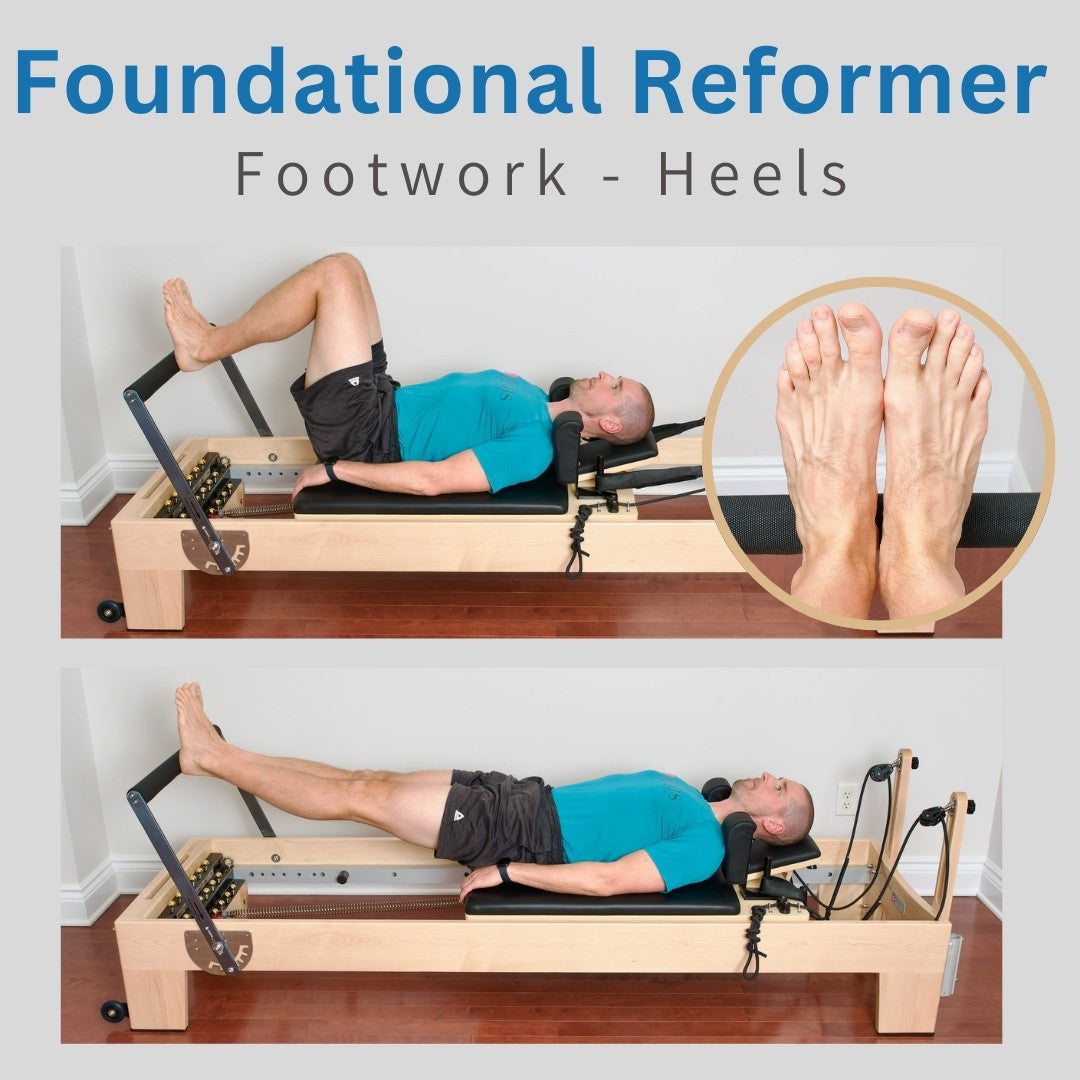
Foundational Reformer: Footwork - Heels
The Pilates Reformer Heels exercise strengthens the ankle and knee extenders, calves and quads. The exercise enhances muscle tone and strength in the lower body and improves overall leg alignment and stability. It also enhances athletic performance, aids in injury prevention, and promotes efficient lower body movement.
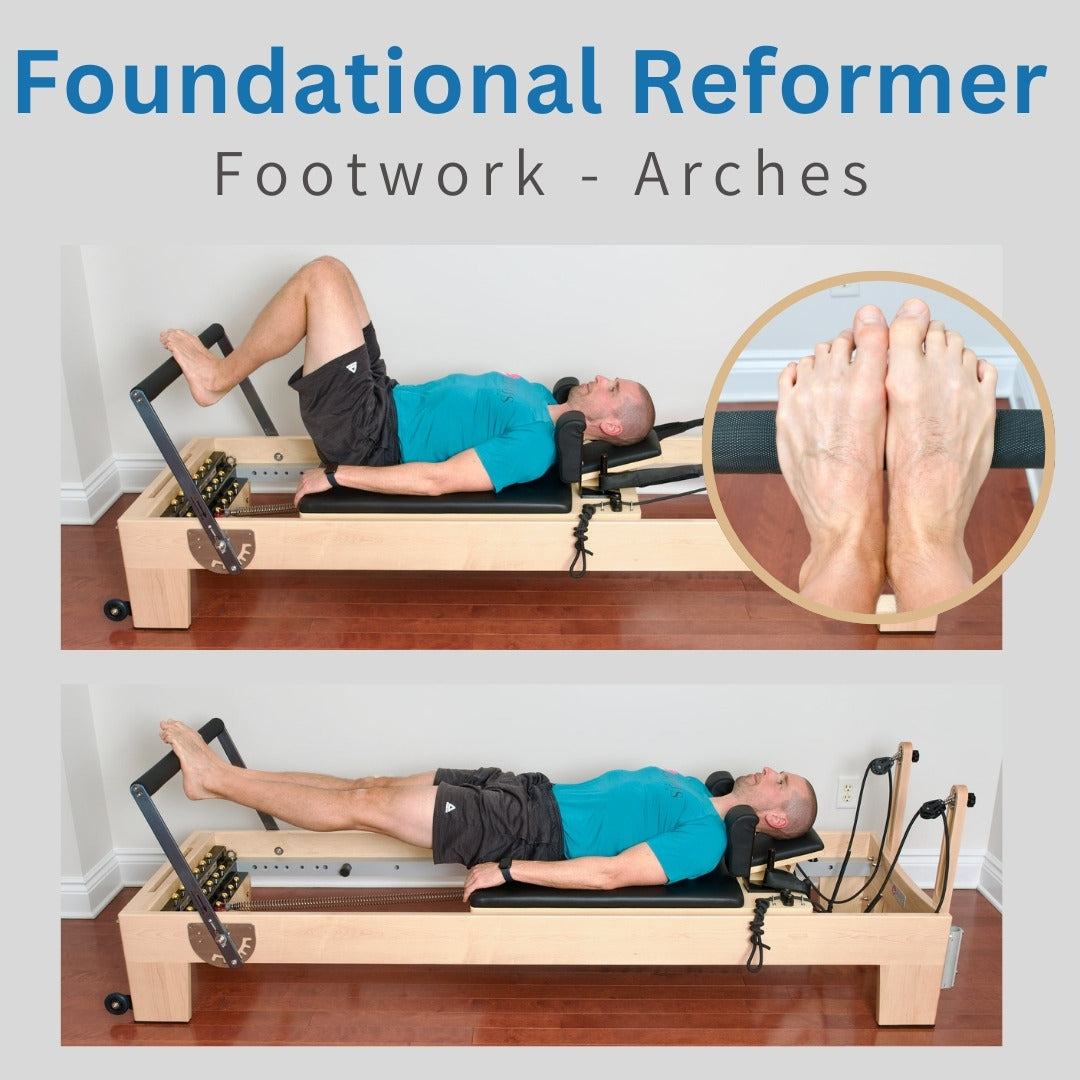
Foundational Reformer: Footwork - Arches
The Pilates Reformer Arches exercise focuses on strengthening the foot arches, calves, and stabilizing lower leg muscles. Participants position their feet with arches on the bar, challenging balance and control. This movement enhances foot strength, promotes calf muscle toning, and improves overall lower leg stability. It is especially beneficial for athletes, dancers, and those seeking to improve foot function and prevent injuries related to weak foot muscles or poor balance.
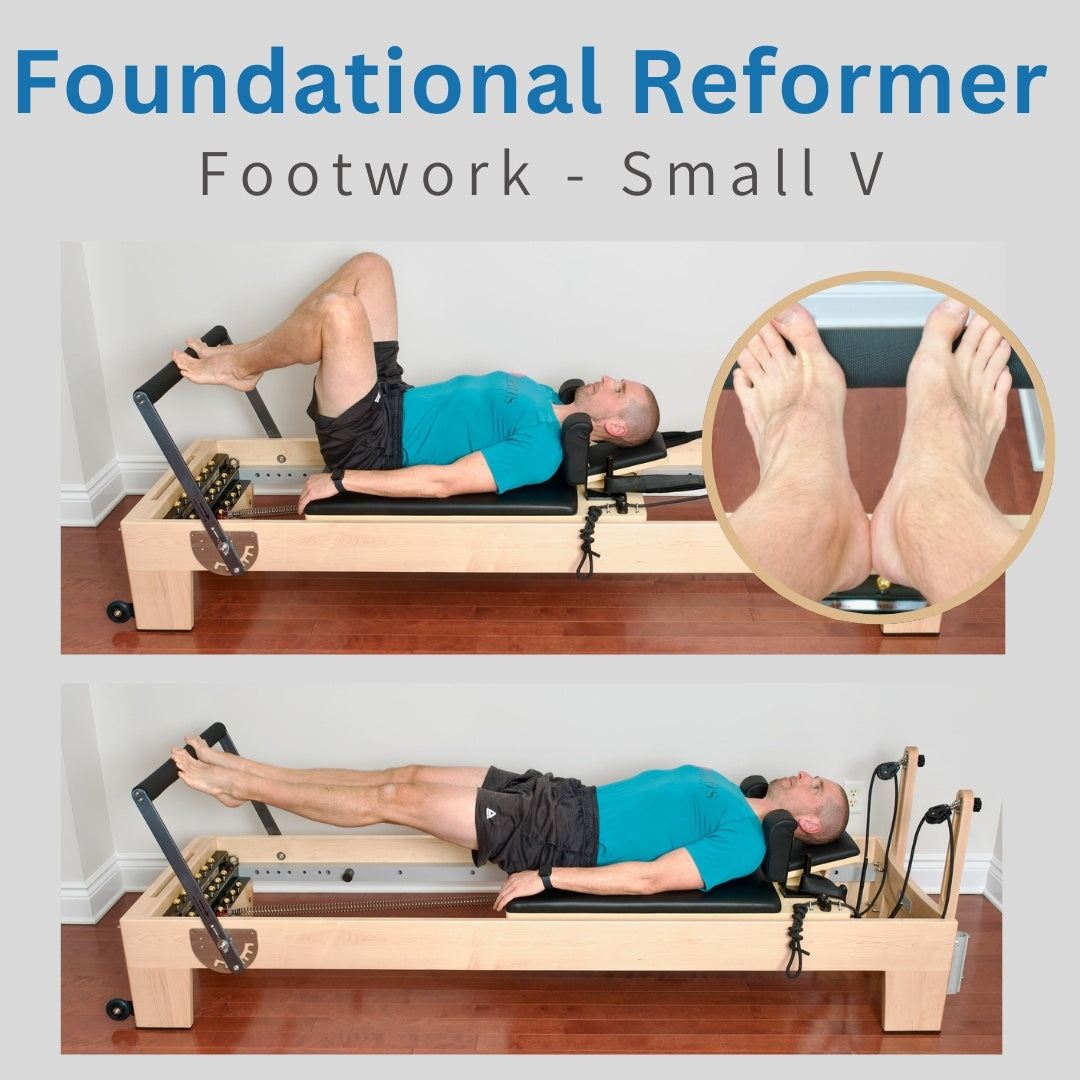
Foundational Reformer: Footwork - Small V
The Pilates Reformer Small V exercise targets the ankle and foot extensors, inner thighs (adductors), calves, quads. Performed with feet in a 'V' shape, this exercise strengthens and tones these key areas, enhances hip alignment, and improves lower body stability.
